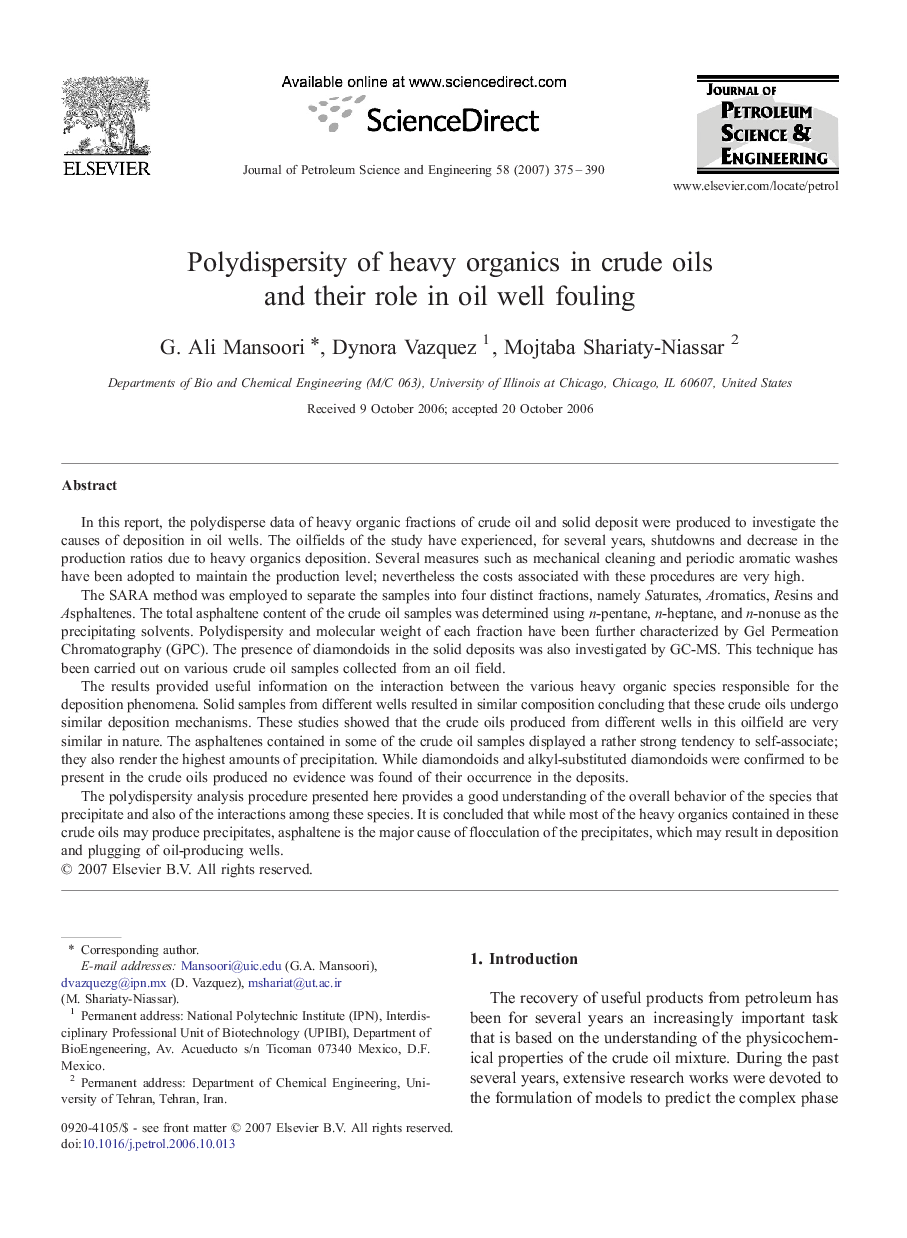| Article ID | Journal | Published Year | Pages | File Type |
|---|---|---|---|---|
| 1756364 | Journal of Petroleum Science and Engineering | 2007 | 16 Pages |
In this report, the polydisperse data of heavy organic fractions of crude oil and solid deposit were produced to investigate the causes of deposition in oil wells. The oilfields of the study have experienced, for several years, shutdowns and decrease in the production ratios due to heavy organics deposition. Several measures such as mechanical cleaning and periodic aromatic washes have been adopted to maintain the production level; nevertheless the costs associated with these procedures are very high.The SARA method was employed to separate the samples into four distinct fractions, namely Saturates, Aromatics, Resins and Asphaltenes. The total asphaltene content of the crude oil samples was determined using n-pentane, n-heptane, and n-nonuse as the precipitating solvents. Polydispersity and molecular weight of each fraction have been further characterized by Gel Permeation Chromatography (GPC). The presence of diamondoids in the solid deposits was also investigated by GC-MS. This technique has been carried out on various crude oil samples collected from an oil field.The results provided useful information on the interaction between the various heavy organic species responsible for the deposition phenomena. Solid samples from different wells resulted in similar composition concluding that these crude oils undergo similar deposition mechanisms. These studies showed that the crude oils produced from different wells in this oilfield are very similar in nature. The asphaltenes contained in some of the crude oil samples displayed a rather strong tendency to self-associate; they also render the highest amounts of precipitation. While diamondoids and alkyl-substituted diamondoids were confirmed to be present in the crude oils produced no evidence was found of their occurrence in the deposits.The polydispersity analysis procedure presented here provides a good understanding of the overall behavior of the species that precipitate and also of the interactions among these species. It is concluded that while most of the heavy organics contained in these crude oils may produce precipitates, asphaltene is the major cause of flocculation of the precipitates, which may result in deposition and plugging of oil-producing wells.
